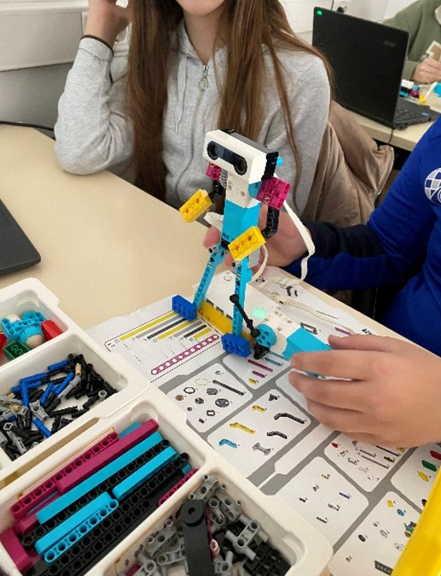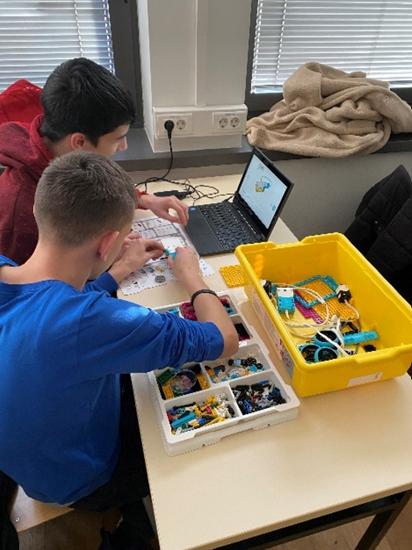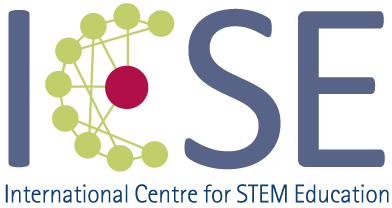Basic Information
- Interdisciplinarity: Computer Science, Robotics
- Duration: 90 minutes
- Target Age Group: 11–14 years old
- Partners Involved: Faculty of Electrical Engineering and Computing, University of Zagreb (FER)
Description of the Activity
“Teach a Robot to Dance!” is a Lighthouse activity focused on digitalization, designed to help participants:
- Learn fundamental concepts of robotics, including the essential components of a robot and the criteria that define an object as a robot.
- Get introduced to the basics of programming and learn fundamental block coding procedures.
- Explore the potential of using a well-known children’s construction toy, Lego bricks, to build a functional robot.
- Experiment with programming a Lego robot to perform simple tasks, such as moving its arms and legs or dancing.
- Develop a positive attitude toward computing by linking robotics and programming with the familiar activity of assembling Lego figures.
Course of the Activity
Participants are divided into pairs, and each pair receives a Lego Education SPIKE™ set along with a laptop. Once assembled, the robot is connected to the SPIKE Lego Education website for activation and programming.
Participants are first introduced to the basic components of a robot, including:
- The robot’s brain (processor): used for programming.
- Input components: sensors for detecting distance, color, sound, or touch.
- Output components: motors that respond to sensory input.
They then proceed to assemble a robot dancer using a provided template. While the structural framework follows the template, participants have creative freedom in designing the robot’s external appearance and configuring the connections between input and output components.
Once the robot is successfully built and connected to the computer, participants begin solving pre-prepared tasks.
The problem-solving phase is structured as a guided learning experience, beginning with worked examples before transitioning to a constructivist approach, where participants independently tackle assigned problems. These tasks guide students through programming the robot to complete simple actions using block-based coding.
Block-based coding is a simplified form of programming where, instead of writing lines of code in a programming language, commands are represented as drag-and-drop word blocks. Tasks are solved in pairs, collaboratively with other pairs, or with assistance from the activity leader if needed.

Picture: University of Zagreb

Picture: University of Zagreb
Description of Implementation
This activity was designed by members of the Faculty of Electrical Engineering and Computing, University of Zagreb and was conducted in one of the faculty’s lecture halls, lasting 90 minutes.
The main leaders of the activity were Prof. Dr. Sc. Ana Sović Kržić and Liljana Puškar, both members of the Institute for Electronic Systems and Information Processing at the Faculty of Electrical Engineering and Computing. Their role was to introduce participants to the Lego Education SPIKE™ Prime set, as well as the basics of robotics and programming, and to coordinate the participants’ activities during the problem-solving process with the robots. Additional support in organization, coordination, logistics, and participant engagement was provided by Matea Dvorsčak (PMF).
Participants and Engagement
There were 27 active participants in the Lighthouse activity. Most were elementary school students aged 13 to 14, along with one 16-year-old high school student and two teachers.
Participants played an active role in the activity and were encouraged to ask questions. Their inquiries were mostly related to assembling input and output components, finding corresponding parts, and clarifying the functions of specific components. Beyond asking questions, once they became familiar with the basics of programming and task-solving, participants were encouraged to explore the robot’s capabilities independently.
For example, they discovered that the robot could react to sound or movement, depending on the sensor they had connected or activated. Some also found that the robot could dance to music, a discovery they found highly entertaining.
Challenges and Problem-Solving Approach
Several challenges were observed during the activity:
- Some participants struggled with assembling the robot. Difficulties ranged from over-reliance on instructions (e.g., if the template showed a robot with yellow legs, some participants were concerned that they did not have a yellow Lego piece in their set) to incorrect assembly of essential components (e.g., improper connection of input and output components to the processor).
- Some participants faced difficulties in coding independently.
At the beginning of the activity, when facing a challenge, participants asked for help from the activity leaders or teachers. However, as the session progressed, they became more comfortable, started seeking help from their peers, and eventually engaged in independent exploration to solve problems on their own.
Outcomes
During the activity, students will:
- Gain an understanding of the basics of robotics.
- Learn the fundamentals of programming.
- Practice basic block coding procedures and apply them to new but similar tasks.
- Develop a positive attitude toward robotics and programming.
Final Remarks
Programming fosters essential digital skills, problem-solving abilities, and algorithmic thinking, all of which are relevant in daily life. This activity not only introduces fundamental concepts in coding and robotics but also promotes a positive attitude toward programming.
To enhance learning, providing each pair with digital access to task lists would enable self-paced progress. The activity is adaptable for different age groups: younger students can engage with guided Lego Essential tasks, while older students can take on more complex sensor-based challenges.
Well-structured and impactful, this initiative is highly recommended for future implementation.
